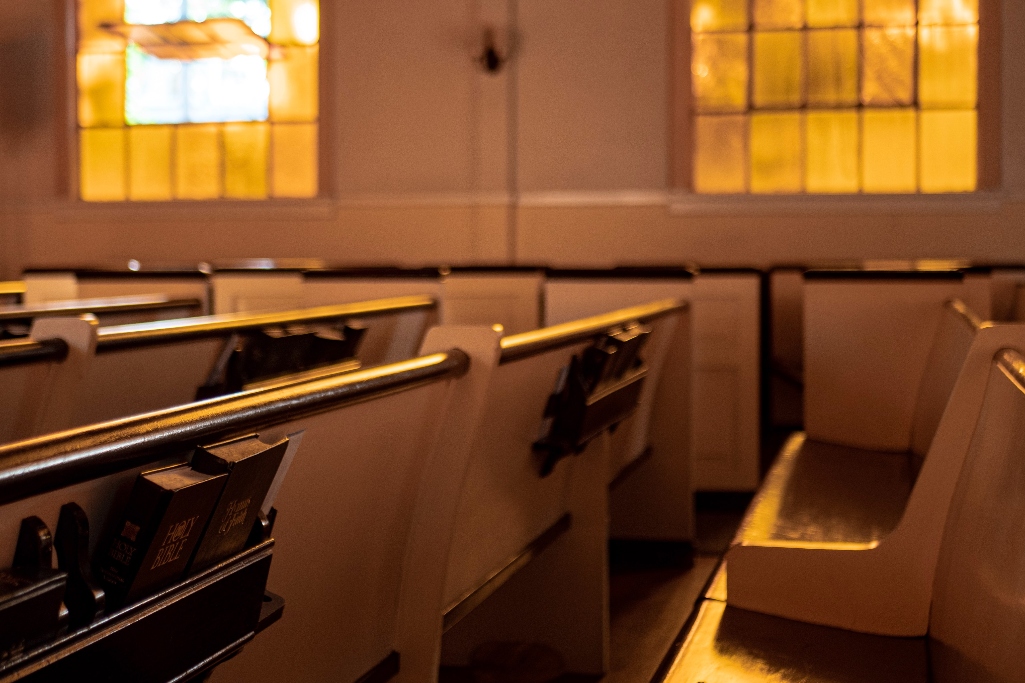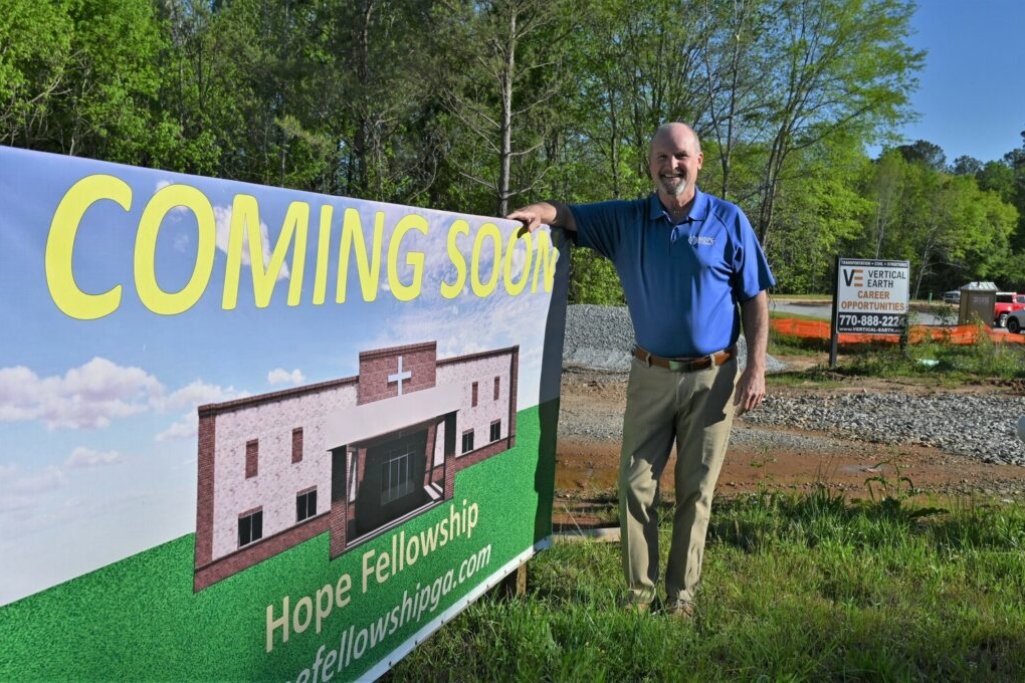
Pastor Irvin Haken, at right, repairs a fence with his nephew, Jonathan Baker, a member of First Baptist Church in Glencoe, Okla. Haken serves bivocationally and often discusses church business with leaders while working at construction or farming.
NASHVILLE (BP) — It happens on Mondays and Wednesdays, Thursday afternoons and Sunday nights. It can take place in a building or standing in a field near a freshly-dug hole.
The church staff meeting bears many similarities regardless of size, location and setting. Prayer is central. Order is paramount. Food is included if at all possible.
Differences exist primarily through approaches to productivity and leadership as well as the ministry context, such as location and church size.
Grace Point Fellowship in Franklin, Ohio, has up to 700 in weekly worship attendance across three Sunday morning services and a student service that night. An average of 468 watch online. About a dozen staff meet weekly, with eight more part-time staff and elders getting access to those notes.
“We also include our church planters/missionaries in residency, when applicable, for those meetings and sometime have additional interns in the summer,” said Lead Pastor Reagan Wagoner, who is also state catalyst for the Baptist Convention of Ohio’s Southwest Region. “Typically, about 25-30 people are receiving the staff meeting information.”
Irvin Haken has to stay in contact with just as many people, but in a much different setting.
Haken makes up the paid ministry staff of First Baptist Church of Glencoe, Okla., serving in that role bivocationally alongside his construction business. Two volunteers lead the music and youth ministries.
Glencoe sits 16 miles outside of Stillwater, with many commuting into the city for jobs at Oklahoma State University. Fewer than 80 students attend Glencoe High School.
First Baptist averages a little more than 60 in Sunday attendance. Church business is conducted with deacons and various committees. Those committees give their reports once a month when the regular Sunday evening worship service is altered to accommodate a business meeting. A pot luck dinner follows.
“The attendance for business meetings picked up when we added the dinner,” 0said.
It’s not unusual for Haken to pause in his work on a tractor to talk church business on the phone or in person. The nature and availability of his church “staff” requires such fluidity.
Mondays have typically been when most staffs meet, as is the case with Georgia churches First Baptist Helen and Tabernacle Baptist in Cartersville. The staff at Foothills Baptist in Las Vegas, however, meets on Tuesdays. In Ohio, Grace Point staff gather on Wednesdays, with Wagoner holding a monthly meeting with elders on Thursdays from 3:30-5:30 p.m.
Reasons for those differences generally connect to the church’s ministry context. Grace Point staff take Mondays off, so Tuesdays are for discussion and final preparation for Wednesday’s meeting. At Foothills, Pastor Hoyt Savage indicated a similar approach is taken, but without the day off, and so Mondays are … Mondays.
“It provides each staff member time to get their week underway and collect information on prospective members,” he said. A contact list for those visitors is then made up for the church’s three full-time ministry staff.
Although First Helen and Tabernacle both meet on Mondays, the former does so at 10 a.m. while the latter does at 1:30 p.m.
It gives staff extra time to prepare their ministry reports, said Pastor Patrick Latham. Once a month, the group has a catered lunch with a guest speaker. The speaker has ranged from a member of the Chamber of Commerce, a business leader, other pastors and even Latham himself, if there was something in particular he wanted to discuss.
Meeting times tend to go about two hours, but perhaps less, said pastors interviewed for this article. Devotions and prayer are common, as well as evaluations of the previous worship service. The upcoming Sunday is discussed along with future events for ministry areas.
A printed agenda isn’t uncommon, and is often provided to staff beforehand.
Latham uses a system he built at his previous church with input from a member who was in the Army. Through it, each ministry leader develops a six-phase approach to planning each activity, beginning six months away from the event itself.
“Laymen in my churches have helped me in putting together the planning process,” he said. “They had skills in these areas – such as working in HR – and were resources that can be overlooked by pastors.”
The 10 a.m. meeting that naturally runs into lunchtime provides an easy off-ramp for fellowship, pastors said.
“We’ll occasionally meet off-site or end early to take everyone to lunch,” Wagoner said.
“We almost never meet off-site,” said Holmes. “However, we regularly conclude our meetings by going to lunch together.”
In Las Vegas, Savage also said it was normal for staff to eat out after their regular meeting.
The Sunday evening pot luck serves that purpose for the 68-year-old Haken. He has been a part of First Baptist since 1978, serving in various roles of leadership while farming and working construction. He felt a call to preach in 2007 and did that for a bit in area churches before First Baptist asked his help to build up their church – not physically, but spiritually.
The church had previously had a retired pastor filling the pulpit. The congregation wanted to return to calling a full-time pastor. Haken, as someone familiar with the church and its finances, knew that would be a challenge.
“I had been serving as the interim and told them I could be the pastor,” he said. “I just feel like church members should play a part in everything.”
(EDITOR’S NOTE – Scott Barkley is a national correspondent for Baptist Press.)


